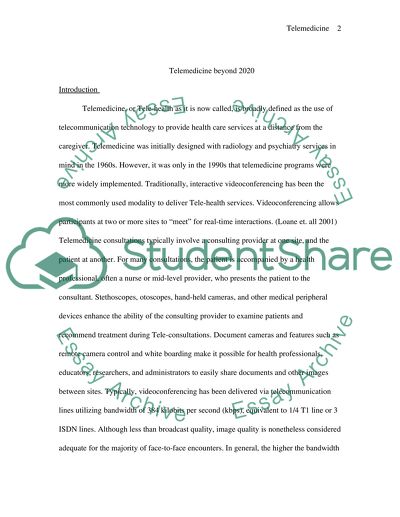Cite this document
(“Telemedicine Essay Example | Topics and Well Written Essays - 1000 words”, n.d.)
Retrieved from https://studentshare.org/technology/1526426-telemedicine
Retrieved from https://studentshare.org/technology/1526426-telemedicine
(Telemedicine Essay Example | Topics and Well Written Essays - 1000 Words)
https://studentshare.org/technology/1526426-telemedicine.
https://studentshare.org/technology/1526426-telemedicine.
“Telemedicine Essay Example | Topics and Well Written Essays - 1000 Words”, n.d. https://studentshare.org/technology/1526426-telemedicine.


